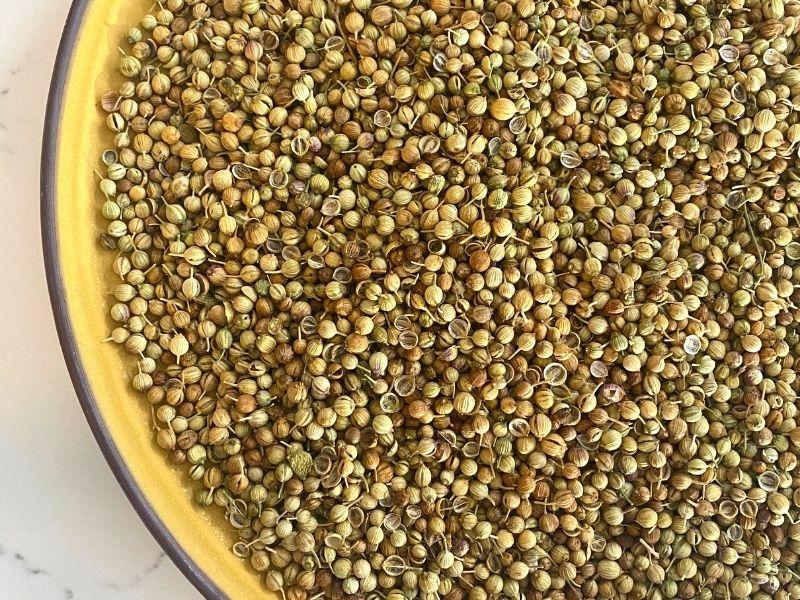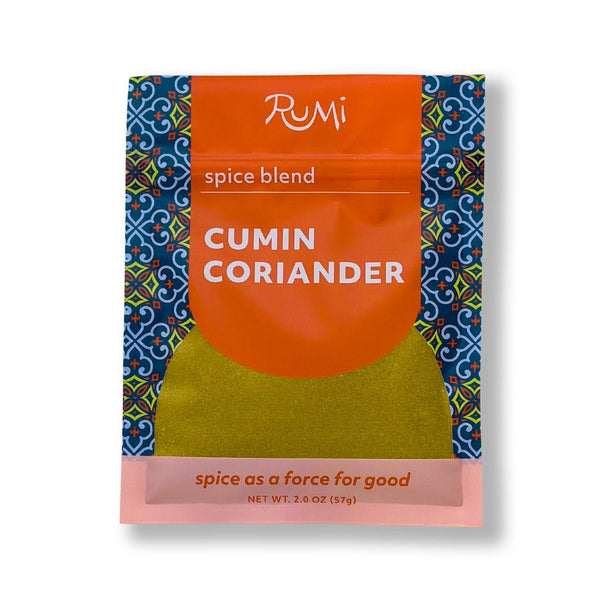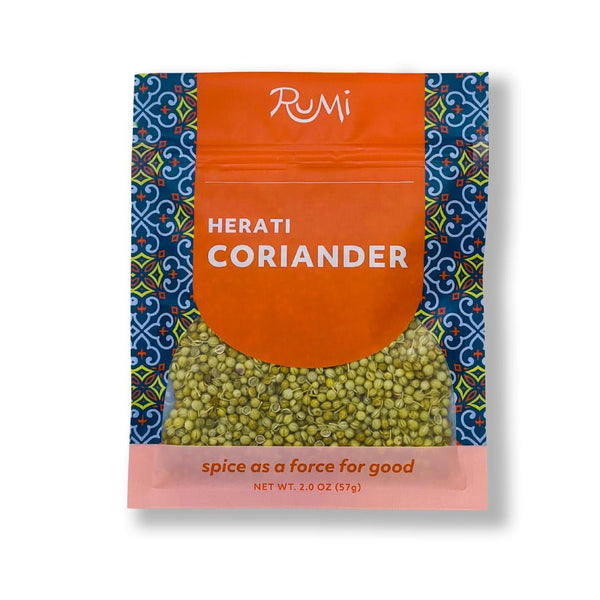With its sweet & woody, citrus-like flavor (similar to orange rind), coriander is a delightful flavor addition to soups, stews, vegetables, and meat dishes.
It has a long history in traditional spice blends in Indian, Middle Eastern, and African cuisines. The distinctive warm, bittersweet taste also makes it a perfect complement to cumin - paired in many spice blends like garam masala, zhug, & ras el hanout.

Coriander seeds are the dried fruit of the plant also known as cilantro or Chinese parsley - a member of the parsley family. The origins of the name 'coriander' trace back to the ancient Mycenaean Greek word koriannon. Evidence of coriander cultivation has been found in archaeological sites from 8,000 years ago around the Mediterranean. Although it is native to that region, the growth of coriander has spread over vast areas of western Asia and Southern Europe. It also thrives in Australia, South America, & North America where it plays an important role in regional Mexican & New Mexican cuisines.
The entire coriander plant is edible with the leaves and seeds as the most well-known parts.
The leaves, commonly called cilantro in the United States, are used as ingredients, fresh or dried, or as a garnish in meals around the world. It can be controversial with some due to a small but still sizable percentage of the population experiencing a soapy taste when eating this herb. Affected people have a genetic predisposition that amplifies the feeling of aldehydes in cilantro, which are the source of the unpleasant taste.

Coriander seeds have long been a treasured spice around the world. Dried seeds, harvested from the fruits that develop in the plant's pink or white flowers, can range in colors from green, beige, and brown. Fortunately, for those who dislike soapy cilantro, coriander seeds do not impart the same aftertaste. The leaf and the seeds have distinctly different flavor profiles - and, should not be used in recipes interchangeably.
Coriander is often sold as raw, whole seeds since it quickly loses that citrus flavor when ground. Before grinding, toasting the seeds in a small pan over a low burner will enhance their flavor. For grinding, you can use a mortar and pestle, a spice grinder, or put the seeds in a small freezer bag and smash with a heavy rolling pin. Grind the seeds coarsely to retain some of their texture or ground finely into a powder. In a soup, you might prefer a fine grind; in a steak rub, a nice coarse grind.

Pictured Coriander Flowers
Now that you know a little more about this essential spice, what more would you like to know? Let us know in the comments!



